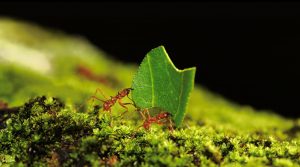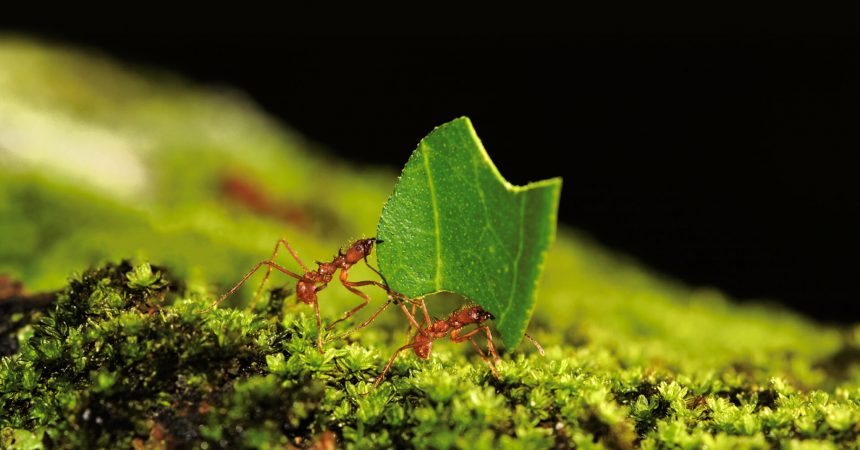Zoo InternQuest is a seven-week career exploration program for San Diego County high school juniors and seniors. Students have the unique opportunity to meet professionals working for the San Diego Zoo, Safari Park, and Institute for Conservation Research, learn about their jobs, and then blog about their experience online. Follow their adventure here on the Zoo’s website!
 Everyone loves elephants, orangutans, and tigers, and yet for some reason all the sweet little bugs are overlooked. It’s common to think bugs are scary and slimy, but Esther Chang of the San Diego Zoo proclaims that this is simply untrue! Ms. Chang has been working in the Insect House at the Zoo for over 11 years, and told us all about the creepy crawlies who live there.
Everyone loves elephants, orangutans, and tigers, and yet for some reason all the sweet little bugs are overlooked. It’s common to think bugs are scary and slimy, but Esther Chang of the San Diego Zoo proclaims that this is simply untrue! Ms. Chang has been working in the Insect House at the Zoo for over 11 years, and told us all about the creepy crawlies who live there.
One of the more popular exhibits at the Insect House is home to the leafcutter ants. Leafcutter ants are insects, which means they are a part of the biological class Insecta, have three-part bodies, and scurry around on three tiny pairs of legs. Leafcutter ants are farmers and spend their days growing fungus as a food source. These ants are classified even further as social insects. Social insects, or Eusociality, are part of the highest level of animal sociality and are defined by the following characteristics: cooperative brood care, overlapping generations within a colony, division of labor, and contain behavioral groups known as castes. Social insects also have a single individual designated to reproduce, for the leafcutter ants, that individual is the queen.
The queen is essential to the colonies wellbeing. More specifically, her pheromones unite the colony, and without her, the ants would simply wander off. Unlike other insects, the leafcutter ant queen is genetically different from the other females in the colony. The queen’s main purpose in life is to reproduce and create a colony. In order to do so, she must mate with 10-12 male ants to ensure she has accumulated enough sperm to last for the rest of her life. When the queen mates, she and the males fly into the air, the male transfers the sperm into the queen’s seminal receptacle, and then immediately dies. Once the queen has completed the mating process, she will proceed to find a desirable area to start a new colony. Once she has found a suitable location for her colony, she will tear her wings off and begin to reproduce. From there, an entire colony is born.
As mentioned before, social insect colonies are made up castes. These castes are organized primarily based on age and size. There are typically four castes within a mature colony-minims, minors, mediae, and majors. Minims are responsible for tending to the fungus garden. Minors act as the first line of defense and are constantly patrolling the border of the colony. Mediae ants are in charge of foraging. They cut leaves into fragments and bring them back to the nest to be used as food for the fungus they are growing. Majors are soldier ants who defend the colony from threats. They also work as heavy lifters inside the colony and help to forage trails. All together, they form a highly functioning organization.
Another insect the San Diego Zoo is in the process of preserving is the Quino checkerspot butterfly. This butterfly is actually not located in the Insect House, but the species has its own building, the Butterfly Conservation Lab, behind Elephant Odyssey. The Quino checkerspot butterfly is a subspecies of the Edith’s checkerspot butterfly, and is currently on the endangered species list. Factors such as climate change, drought, invasive species, and habitat loss have caused the Quino checkerspot butterfly to become one of the rarest butterflies in all of Southern California. Currently, the San Diego Zoo is working with the U.S. Fish and Wildlife Service to expand the butterfly’s range and increase their numbers. In order to do so, researchers and rangers will head out in the spring to collect adult Quino checkerspot butterflies, and bring them back to the zoo. The adults are kept at the zoo until they lay their eggs. After they have laid their eggs, they are then released back into the wild in the same location they were first found. The eggs are raised in the Butterfly Conservation Lab. They are hand fed a concoction of nectar, vitamins, and minerals two to three times a day. Once the butterfly reaches adulthood, they are released in a different area to guarantee the expansion of the species. This method has been extremely successful. In late 2016 and early 2017 nearly 750 Quino checkerspot butterflies hatched at the Zoo were released into their natural habitat. The Quino checkerspot butterfly is on the road to recovery and benefited a great deal from just a little bit of help from the Zoo.
There are actually a great deal of threatened and endangered insects that could benefit from a little bit of help. An extremely simple way to help all living creatures is to avoid using pesticides in your home. An environmentally friendly alternative to pesticides is soapy water! Just remember to buy eco-friendly soap and you will not only be helping endangered species but the environment as well. Bugs and insects are an essential part of the ecosystem and you are already taking a step in the right direction by learning about them today!
Helena, Real World Team
Week Two, Fall Session 2018


